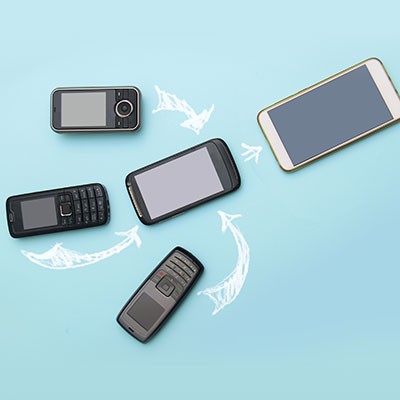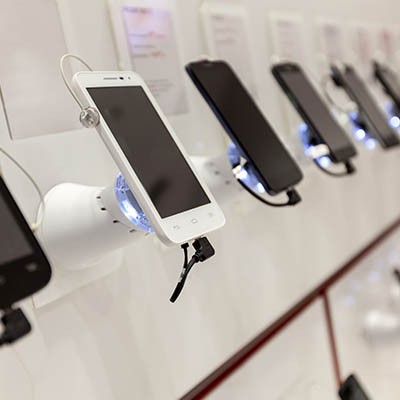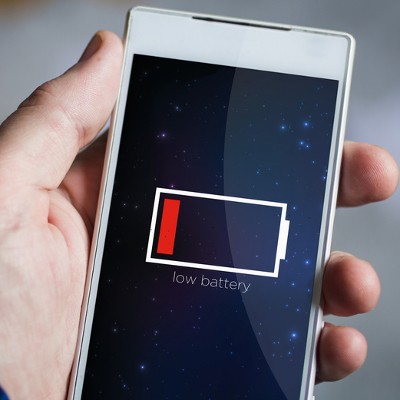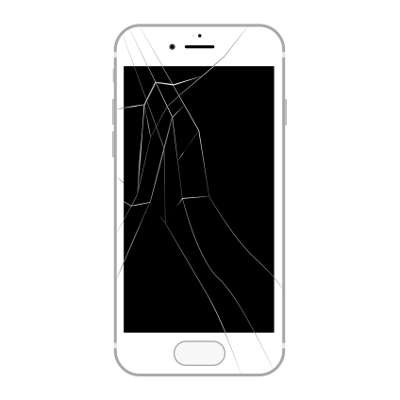It’s not hyperbole to suggest that many people in business these days prefer digital communication over the alternative. Smartphones have evolved over time and adapted to this need. That said, using a smartphone to communicate does still have its fair share of unwritten rules to follow. Let’s discuss some of the dos and don’ts of smartphones.
k_Street Consulting, LLC Blog
Most businesses will find themselves holding on to spare technology, just in case they need it for any reason in the future. Storing this technology to ensure longevity, functionality, and safety is incredibly important. Today, we want to share some best practices to ensure that your stored tech will work as you need it to when it finally comes out of storage.
Technology is constantly evolving, but over the past couple of years, if you thought of yourself as being technologically savvy, you would have a pretty good understanding of the technologies that are trending in society. Let’s take a brief look at five technologies that everyone should have a good grasp on.
Managing storage space on your Android device can be a bit of a challenge, but you can make it easier through the use of automatic app archiving. If you download apps frequently, then you might encounter situations where you have too little storage on your device, but this situation can be fixed with a quick auto-archive feature that will be available eventually for Android users.
We’ve all felt the momentary panic when we reach for our pocket to pull out our smartphone, only to realize that it’s not there. This panic is indicative of a deeper issue with how our society has become reliant on technology, so much so that we have miniature computers in our pockets at all times. Are you using your smartphone as a distraction tool or as a productivity tool? That’s what we’re trying to answer with today’s blog.
The modern smartphone market is one of ingenuity, communication, and productivity, all of which are extraordinarily important in today’s business world. To help you stay apprised of the various developments in the smartphone market, we’ve put together a blog detailing the various flagship smartphone devices for early 2022.
More businesses rely on their mobile strategies than ever before. For the most part, this uptick in mobility has helped sustain some business at a time when many would be expected to fail, but relying more on mobile definitely comes with some risks. This month we thought we would take a long look at mobility and how it can be a risky proposition for the modern small business.
No doubt you’ve noticed the increased use of smartphones. No matter where you go, people are on their phones. Sometimes they are using them in places you wouldn’t even imagine. For the modern business, employee smartphone usage can be a major pain in the side. Today, we’ll go into how smartphone usage helps and hurts a business and how to go about keeping employees from being on their phones for large chunks of the workday.
For the past couple of weeks we’ve taken a look at the 2020 flagship smartphones as well as some innovative new devices that are available now. This week, we will take a look at some of the budget options that are available to consumers. Not everyone has $1,000 to pay for a smartphone, but there are some pretty solid options out there that can provide a sufficient user experience to meet people’s mobile challenges. Let’s take a look at some of the options.
The modern smartphone user is dedicated, spending an average of three hours and 15 minutes per day using them. On average, people check their phones 58 times a day. With this amount of traction, it’s not a surprise that people want to get the best devices they can. Today, we will take a look at what makes a flagship phone, and give you a couple of popular options that are available for the power user right now.
It may not seem like it, but the mobile device is very much like the Internet. They’ve both only been around a short time, demand for each is massive, and their mere presence has changed modern life. Today, we’ll take a look at how the mobile device came to be and give you a brief look at mobile device history.
There is no question that smartphones have assimilated into our daily communications, both on a personal level and in the professional sense. Apps allow us to be social, to accomplish work-related tasks, and yes, kill some time with the latest silly trending game. Of course, as time passes, these devices only grow more advanced. If you’re due for a replacement, you may want to examine some of your options before pulling the trigger.
There are a few reasons that you’d need to restore your Android device. Some reasons are good, like you finally got the phone you were given an IOU for over the holidays, and some are bad, like your old phone had just broken. For this week’s tip, we’ll assume it is the first reason, as we go over how you can easily prepare your phone data for migration.
We go into great depth on how to protect your desktop and laptop computers from malware and other malicious threats. In fact, one of the first steps you take anytime you are setting up a new computer is to install antivirus and other security programs. You do this because an unprotected device presents substantial risk. With the way people are using their smartphones today, it’s a solid practice to outfit your mobile device with the security software needed to maintain the security of your data.
The smartphone is quite possibly the most important invention of our era. As time has passed, these devices have only continued to improve. These improvements have led to ever-increasing demands on the batteries that power our devices... batteries that, for about a decade, have changed very little. Here, we’ll examine the batteries that power our smartphones, and what we may see happen to them in the future.
A lot of business owners kick the tires on mobility before moving onto committing capital to other facets of their IT. When we write about mobility typically what we mean is a commitment to technology that allows staff to work on company projects, access company resources, and do it all from remote locations. This month we’ll talk a little bit about what it means to enhance your operational and staff mobility and provide you some solutions that will facilitate that change for your company.
Smartphones are everywhere. You go to the supermarket, people are on their phones, you go to the gym, people are on their phones. Go into the office? You guessed it...you see a lot of smartphone use that may not be in the best interest to organizational profitability. The question becomes, do smartphones help or hurt business? Let’s get into it.
With more workers opting for mobile solutions than ever before, communications can be tricky to manage for a business. However, is your business’ infrastructure capable of adapting to these new developments in communication technology? You can bet that regardless of where the business takes you, certain applications and devices will always be useful throughout the workday.
Compared to traditional telephone solutions, software-based phone systems have become a major opportunity for businesses to cut costs and improve efficiency. Even if traditional phone systems have their uses, VoIP still wins out by eliminating unnecessary costs and simplifying your business’s physical infrastructure. You might find that VoIP has a place in your office, too.
Most of the time, you don’t care about how long it takes to charge your device’s battery--that is, until you find yourself in a bind and need a full charge ASAP! It’s in a moment like this when you frantically ask the question, “Is there any way to make this battery charge any faster!?” Fortunately, there is.
Can’t find your mobile device? If you’ve taken precautions and enabled solutions designed to track the whereabouts of your device, then you’ve got no reason to panic. Of course, hindsight is 20/20, so you’ll want to make sure you activate a phone-finding solution now (while you’ve got your device in your sights).
Here’s a common scenario: you’re relaxing at home with friends or family and all of a sudden, your cell phone starts ringing. You don’t recognize the number; in fact, your phone lists it as an out-of-state caller, so you don’t pick up. The call eventually ends and you’re back to relaxing. But then, your phone starts ringing again and it’s that same pesky solicitor trying to sell you on the virtues of auto loan refinancing or a free Caribbean vacation. Caller ID and voicemail have helped to curb the suffering over unwanted phone calls in the past, but what if you could just block a caller entirely?
It’s getting to the point where most people have a smartphone, even if they shouldn’t necessarily have one. If you go all-in on a device like this to boost your productivity and efficiency, then you know how difficult it can be at times. We’re here to provide you with some tips to help you better take advantage of your smart device.
The holiday season is the ideal time to pick up your next best smartphone--especially since you might get something great as a gift from your loved ones! We’ll help you decide which type of smartphone is best for your specific needs by taking a close look at some of the great new devices on today’s market.
When it comes to selecting a smartphone, most consumers look to the camera as a major deciding point - after all, many popular applications geared toward the everyday user heavily lean on the use of a camera. This utility and, in some ways, reliance have only encouraged rapid advancement to phone-based camera technology since its origins in the Samsung SCH-V200.
“Augmented reality” is likely one of those terms that you’ve heard before, but that’s more or less your experience with it. However, A.R. has likely been a bigger influence than you may have imagined - especially with the prevalence of smartphones being what it is. Let’s examine augmented reality and how it might be used later on.
Mobile platforms have given way to entirely new ways to develop and make use of apps. More business professionals than ever before are relying on their smartphones to get work done while out of the office, but the functionality of the on-screen keyboard interface has some of them stumped on how to stay productive. It’s for this reason that developers have created applications designed to listen to users’ voices, and record them in text format.
 To get the most life out of your smartphone, you’re going to want to properly take care of it. Of course, this is easier said than done for a small device that’s prone to being dropped and subject to the many dangers of being transported. Here are five smartphone practices to avoid if you want your device to last.
To get the most life out of your smartphone, you’re going to want to properly take care of it. Of course, this is easier said than done for a small device that’s prone to being dropped and subject to the many dangers of being transported. Here are five smartphone practices to avoid if you want your device to last.
 Smartphones are firmly established as a staple of modern society. In fact, sales of smartphones grew a whopping 23 percent during the previous year. It’s the nature of mobile devices for consumers to look forward to the latest models. To that end, here’s our preview of this year’s top three smartphones.
Smartphones are firmly established as a staple of modern society. In fact, sales of smartphones grew a whopping 23 percent during the previous year. It’s the nature of mobile devices for consumers to look forward to the latest models. To that end, here’s our preview of this year’s top three smartphones.
 The point of all these cool smartphones is to make life easier, improve productivity, and communication, but how sure are you that these devices are making things better? One restaurant did a study where they looked at their business both before and after the smartphone revolution. Their findings may make you lose your appetite for mobile technology.
The point of all these cool smartphones is to make life easier, improve productivity, and communication, but how sure are you that these devices are making things better? One restaurant did a study where they looked at their business both before and after the smartphone revolution. Their findings may make you lose your appetite for mobile technology.
 Smartphone users routinely cycle out their old device for a new one every two years or so. When it's time to upgrade, many users see an opportunity to sell their old phone for extra cash. However, a device that's improperly wiped of its data could lead to identity theft if the data is recovered by the new owner.
Smartphone users routinely cycle out their old device for a new one every two years or so. When it's time to upgrade, many users see an opportunity to sell their old phone for extra cash. However, a device that's improperly wiped of its data could lead to identity theft if the data is recovered by the new owner.
 Smartphones that have been running Microsoft's Windows Phone 8 mobile operating system have been manufactured for over a year and a half, and in that time, Android has wrestled the title of "most popular mobile OS" away from Apple's iOS. Windows Phone 8 devices currently sit third, making up just over 3% of all the world's mobile phones. Despite its place in the market, the world's largest software company will release the first major update to their Windows 8 Phone platform in the upcoming months, and early users are saying they're really hitting the mark.
Smartphones that have been running Microsoft's Windows Phone 8 mobile operating system have been manufactured for over a year and a half, and in that time, Android has wrestled the title of "most popular mobile OS" away from Apple's iOS. Windows Phone 8 devices currently sit third, making up just over 3% of all the world's mobile phones. Despite its place in the market, the world's largest software company will release the first major update to their Windows 8 Phone platform in the upcoming months, and early users are saying they're really hitting the mark.
 The world is changing as technology grows ever more mobile. Cell phones have gone from bulky, large pieces of hardware to smaller, more compact specimens. Fifteen years ago, if you were to tell someone that your cell phone could connect to the Internet, you would quickly be dismissed. If you look past the surface laden with Candy Crush Saga and Words with Friends game requests, you can get to the heart of what smartphones have revolutionized – the way we communicate with others.
The world is changing as technology grows ever more mobile. Cell phones have gone from bulky, large pieces of hardware to smaller, more compact specimens. Fifteen years ago, if you were to tell someone that your cell phone could connect to the Internet, you would quickly be dismissed. If you look past the surface laden with Candy Crush Saga and Words with Friends game requests, you can get to the heart of what smartphones have revolutionized – the way we communicate with others.
 As with anything else that's deliberately taken from you, having your smartphone stolen can be one of the most frustrating experiences ever. After all, many of us use them to keep us on point with our daily tasks. Measures are being taken by legislators and cell phone companies to help curb the issue, but there are ways that you can prevent and react to your phone being stolen.
As with anything else that's deliberately taken from you, having your smartphone stolen can be one of the most frustrating experiences ever. After all, many of us use them to keep us on point with our daily tasks. Measures are being taken by legislators and cell phone companies to help curb the issue, but there are ways that you can prevent and react to your phone being stolen.






































